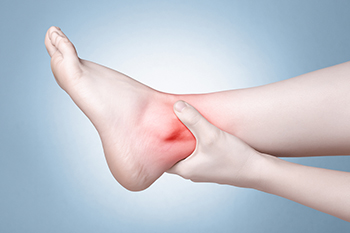
Tarsal coalition, which affects approximately one in every 100 people, emerges during adolescence, causing pain and stiffness in the foot. The issue arises when certain tarsal bones fuse or abnormally connect. This leads to a rigid and inflexible region that includes the talus, calcaneus, cuboid, navicular, and cuneiform bones of the foot. The most common types are calcaneonavicular and talocalcaneal coalition, where bridges form between the calcaneus and navicular bones, or between the calcaneus and talus. Three categories of tarsal coalition are osseus coalition, which involves bony growth, cartilaginous coalition which affects cartilage growth, and fibrous coalition which consists of fibrous tissue growth. Causes of tarsal coalition include genetic abnormalities and foot trauma, such as fractures or sprains, which can disrupt connective tissue development. This may lead to abnormal growth and fusion. Infections that weaken foot structures may cause inflammation, further disrupting normal tissue development. Arthritis, especially certain types and associated medications, increase the risk of abnormal growth and fusion in the foot. Understanding the types and causes is important for early diagnosis and tailored treatment plans. For those experiencing persistent foot pain or suspecting tarsal coalition, it is suggested that you schedule an appointment with a podiatrist for an accurate diagnosis and effective management.
Some foot conditions may require additional professional care. If you have any concerns, contact Howard Kimmel, DPM of Buckeye Foot Care. Our doctor can provide the care you need to keep you pain-free and on your feet.
Rare Foot Conditions
The majority of foot conditions are common and can be treated by a podiatrist. Standard diagnostic procedures are generally used to identify specific conditions and treatment can be rendered. A podiatrist also treats rare foot conditions which can be difficult to diagnose and may need extra attention and care.
There are many rare foot conditions that can affect children. Some of these can include:
- Freiberg’s disease
- Kohler’s disease
- Maffucci syndrome
Freiberg’s disease - This can be seen as a deterioration and flattening of a metatarsal bone that exists in the ball of the foot. It typically affects pre-teen and teenage girls, but can affect anyone at any age. Symptoms that can accompany this can be swelling, stiffness, and the patient may limp.
Kohler’s disease - This often targets the bone in the arch of the foot and affects younger boys. It can lead to an interruption of the blood supply which ultimately can lead to bone deterioration. The patient may limp or experience tenderness, swelling, and redness.
Maffucci syndrome - This affects the long bones in a child’s foot leading to the development of abnormal bone lesions. They are benign growths and typically develop in early childhood and the bones may be susceptible to breaking.
A podiatrist can properly diagnose and treat all types of rare foot conditions. If your child is affected by any of these symptoms or conditions, please don’t hesitate to call our office so the correct treatment method can begin.
If you have any questions please feel free to contact one of our offices located in Brook Park and Willoughby, OH . We offer the newest diagnostic tools and technology to treat your foot and ankle needs.
